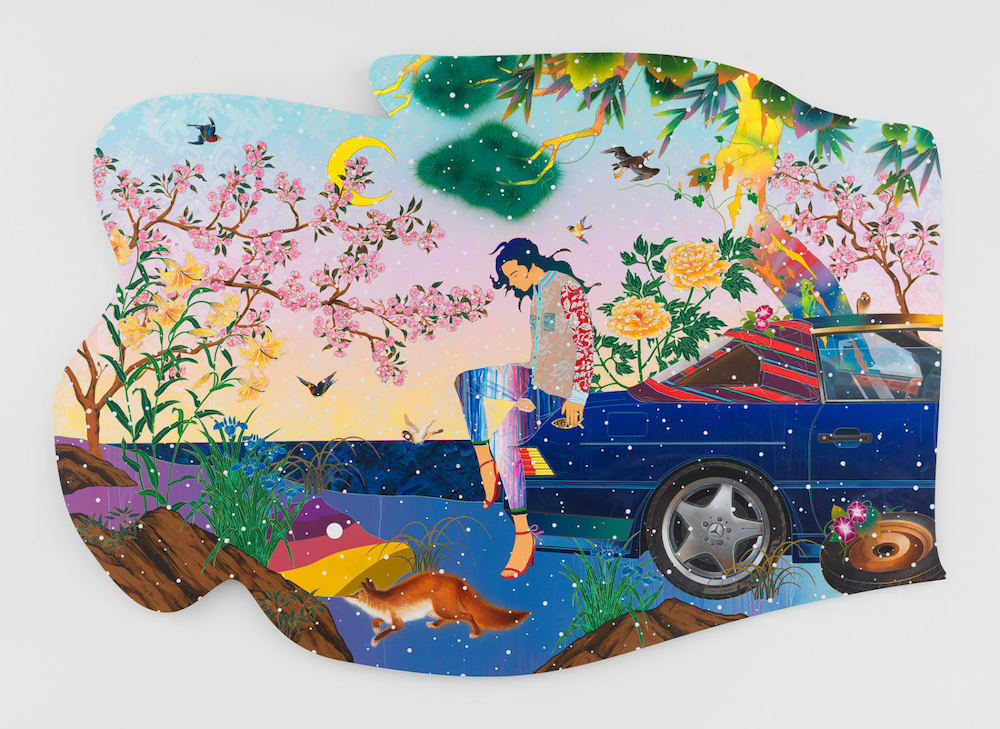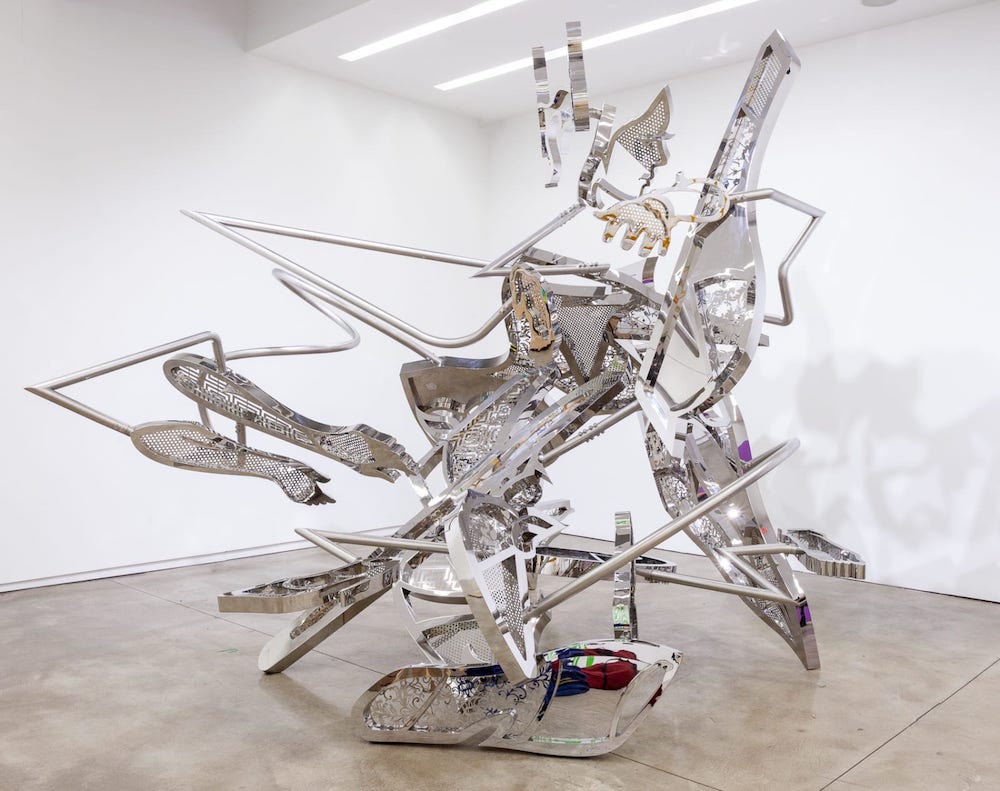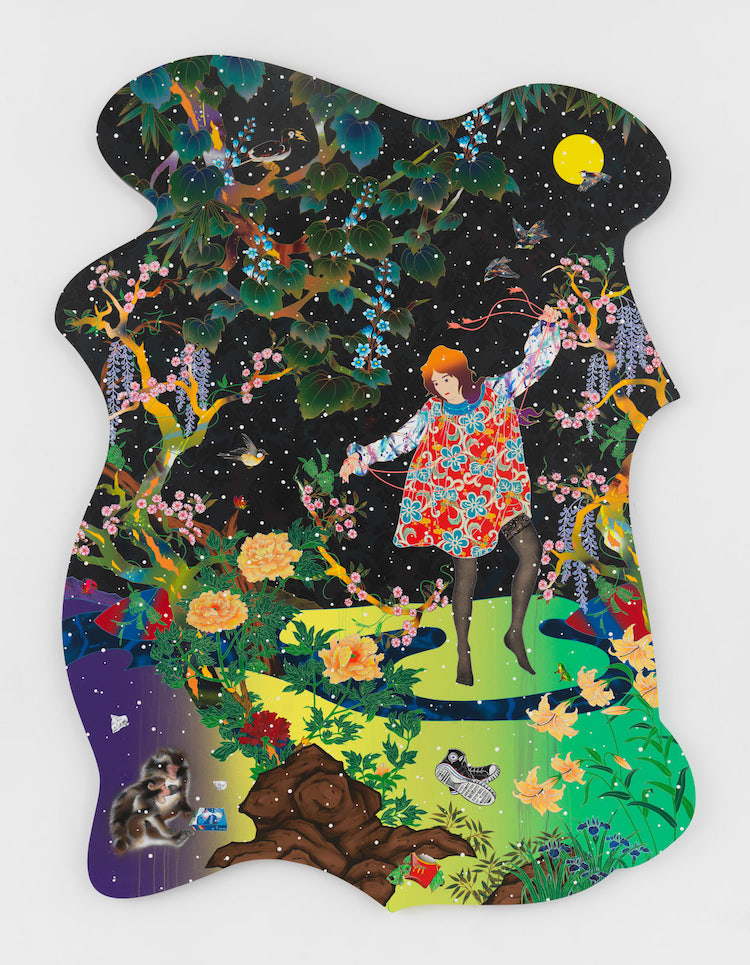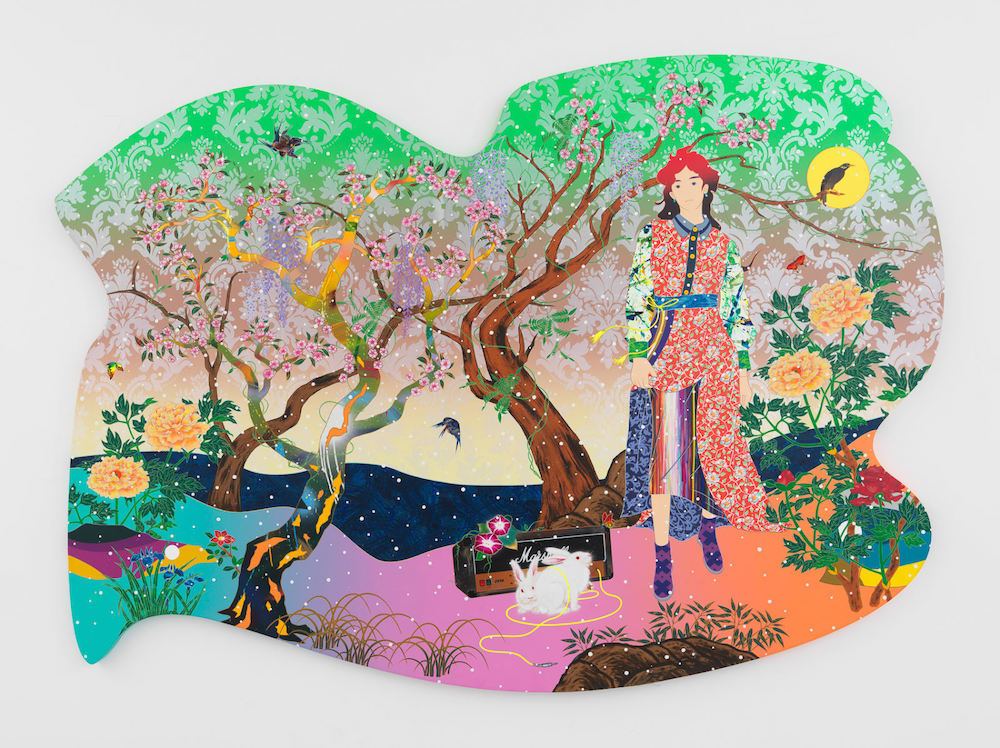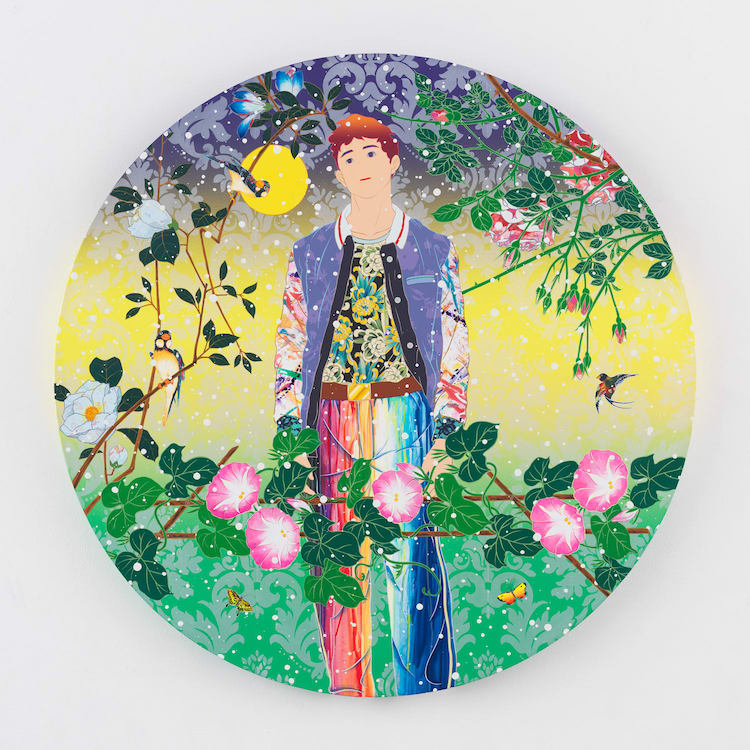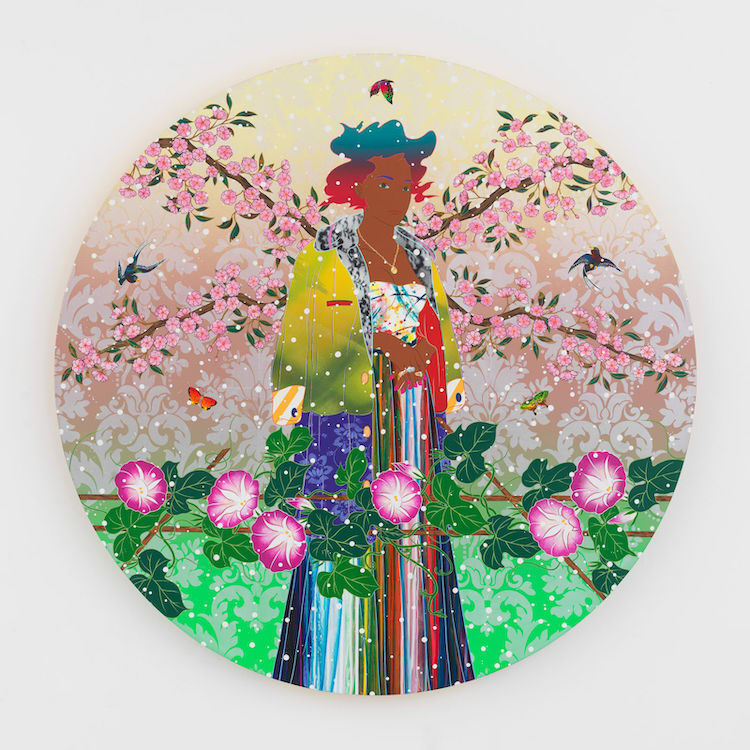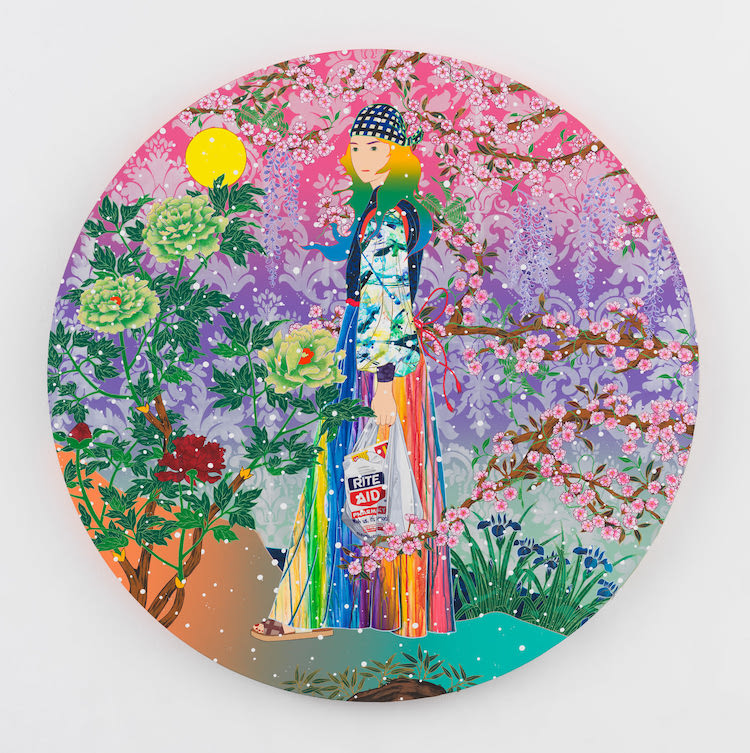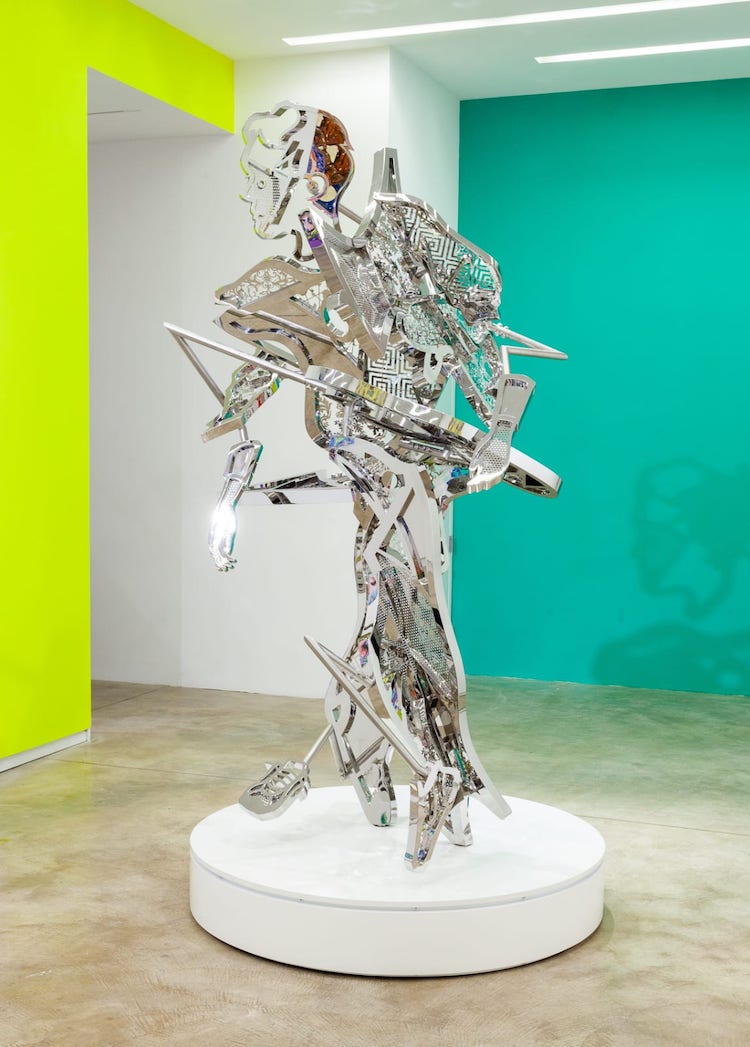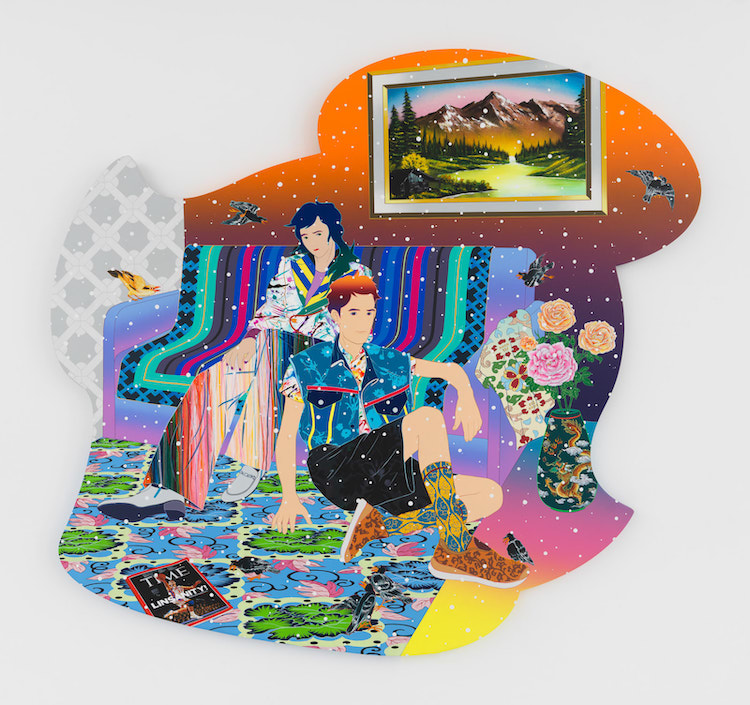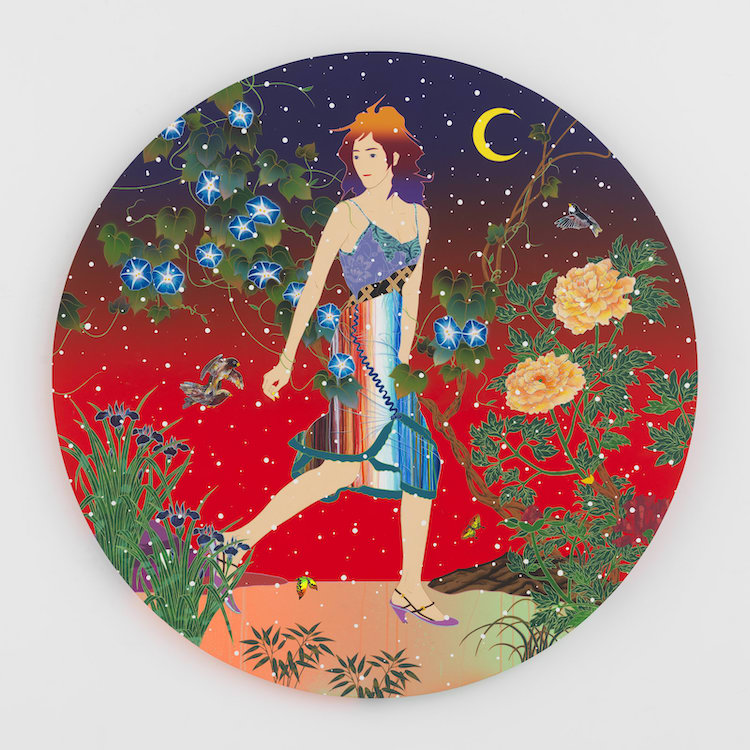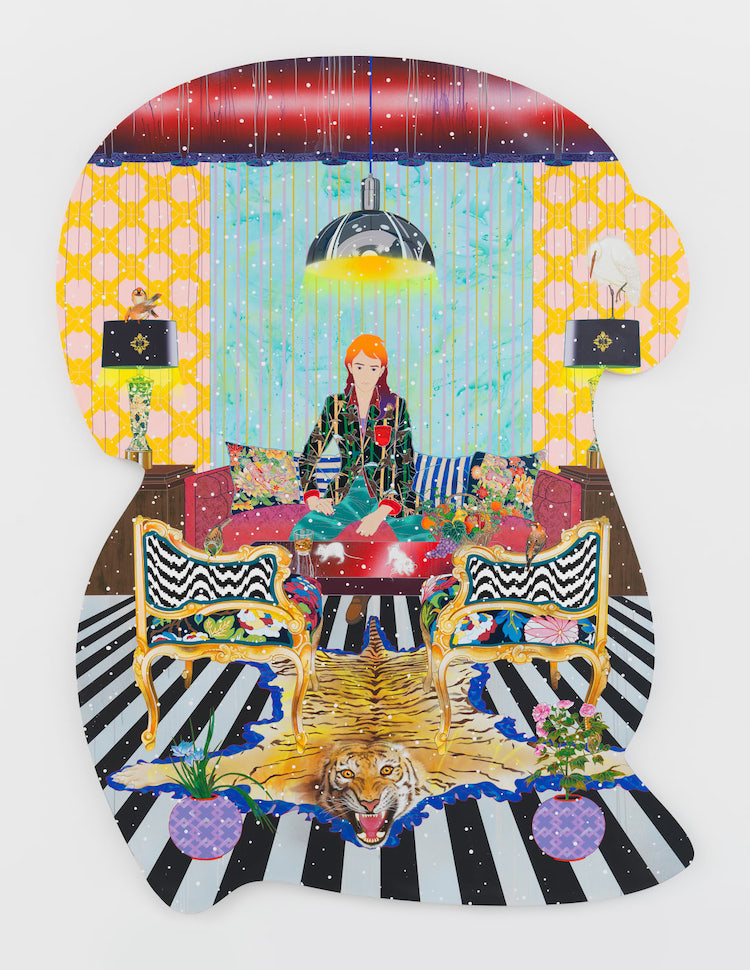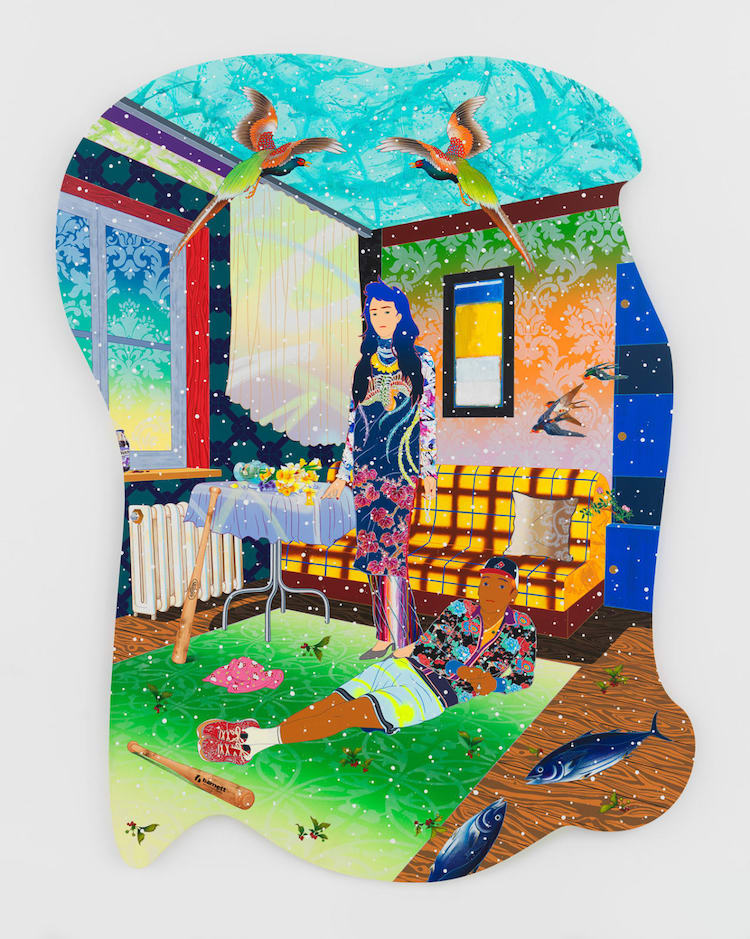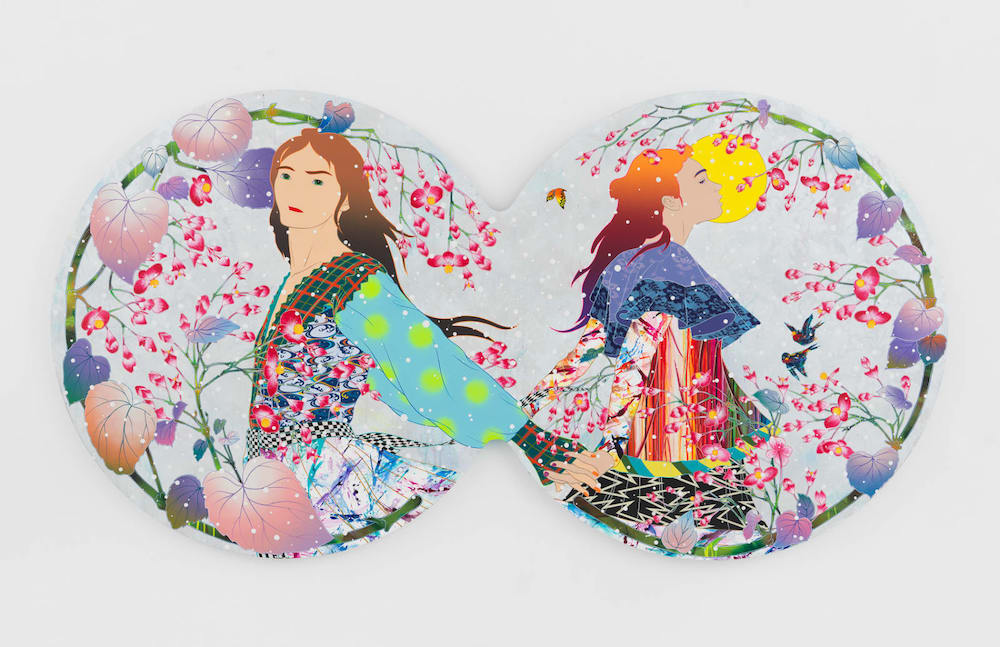Kavi Gupta presents The Best Part About Us, a solo exhibition of new paintings and sculptures by internationally acclaimed, Japanese-born, New York-based artist Tomokazu Matsuyama.
The exhibition comes on the heels of the artist’s landmark solo exhibitions at two of China’s largest and most influential private museums, Long Museum Shanghai and Long Museum Chongqing. As with those exhibitions, the visual language Matsuyama deploys in the works in The Best Part About Us reflects the experiences of today’s nomadic diaspora—a global, intercultural community of wandering people who seek to understand their place in a world full of contrasting visual and cultural dialects.
Amalgamated from his vast mental and physical archive of iconographical material, Matsuyama’s painted worlds vivify his lived experience. His fresh approach to the language of figuration creates dual references to both our contemporary realities and our multiplicitous pasts, combining allusions to fashion models torn from the pages of glossy magazines; flora and fauna borrowed from Edo-period folding screens; open-source wallpaper patterns from the Internet; fragmented snippets of pop culture and celebrity life; frozen movements captured from the garments of centuries-old Buddhist sculptures; compositional strategies of the European Renaissance masters; aesthetic cues from Modernist art history such as shaped canvases and Abstract Expressionist techniques; and of course, those innumerable bits of branded trash ubiquitous on the streets of every city in the Western world.
Matsuyama’s carefully constructed, fictional landscapes welcome anyone inside to build their own narrative and discover their own meaning. What name should we give this aesthetic, which relates to nobody nowhere, yet is recognized by everyone everywhere?
“I call it the global us,” Matsuyama says.
This is Matsuyama’s mastery as an artist; by questioning what is familiar and what is foreign, he shows us pictures of others that are also reflections of ourselves. The uncanny process of recognizing the unfamiliar also plays out in the presence of Matsuyama’s sculptures, several of which are included in the exhibition. Simultaneously familiar and alien, they hint exquisitely at the worlds we know, not from life but from a dream. Hand welded from sheets of stainless steel and hand buffed to a mirror shine, these fragmented, labyrinthine forms are frozen in gestures that, again, relate to the “global us.”
“My visual language is a community-based language,” Matsuyama says. “My paintings are not intended to inform viewers of specific messages nor narratives. These little fractions of everyday culture remind the viewers of narratives in their own life. That leads to ownership. It represents them. It represents me. It represents us. What’s the best part? It’s subjective.”



